Understanding FODMAP Categories: How FODZYME Helps with Common FODMAP Triggers
FODMAPs are found in many foods, from fruits and vegetables to whole grains, nuts and dairy products. The acronym FODMAP stands for Fermentable Oligosaccharides, Disaccharides, Monosaccharides, and Polyols.
Once you know or suspect your FODMAP triggers, FODZYME digestive enzymes will help you tolerate otherwise triggering FODMAPs so you can follow a balanced diet. FODZYME is a unique enzyme powder that breaks down FODMAPs in food, making meals more digestible. FODZYME works on fructans, GOS and lactose immediately upon contact, ensuring quick and effective breakdown before these FODMAPs trigger digestive symptoms.
What are the most common FODMAP triggers?
FODMAPs are common digestive triggers for those with irritable bowel syndrome (IBS), but sensitivity to all FODMAP groups is rare. The goal of an elimination diet like the low FODMAP diet is to understand which categories of FODMAPs you may be sensitive to and learn portions you may tolerate. Long-term, a low FODMAP diet is personalized based on your FODMAP tolerance levels and which foods trigger symptoms for you.
To start, it's important to understand how the FODMAP fructan varies from fructose. Each influences IBS symptoms in a different way. So let's first peel back the onion (or garlic!) on the difference between the structure of fructan vs. fructose and how their intolerances tend to manifest.
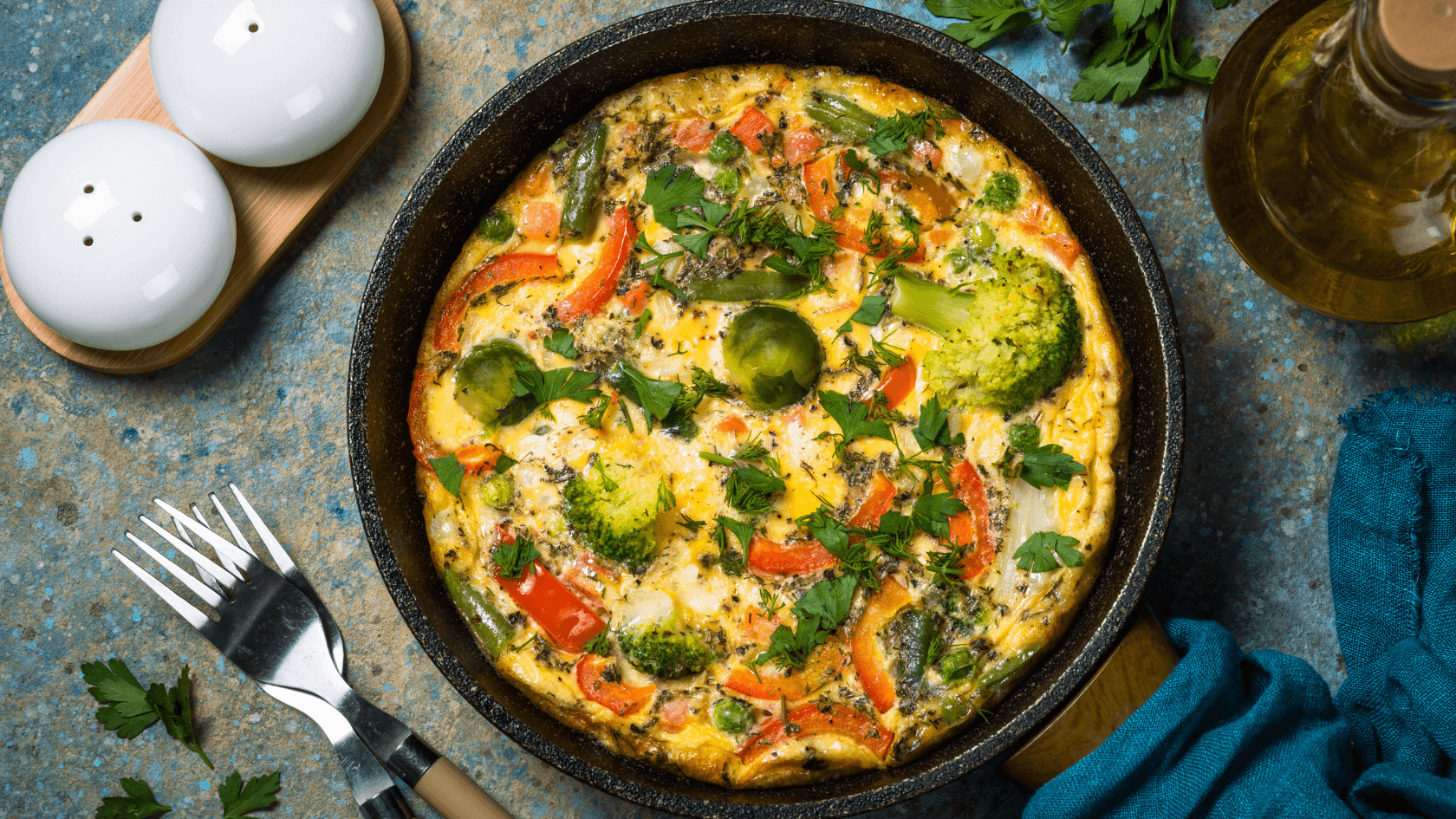
Fructose vs. Fructans: The Key Differences in FODMAP Categories
Fructose (the 'F' in FODMAP) is a simple sugar, or monosaccharide. Fructans (the ‘O' in FODMAP) are long chains of fructose, typically with a sucrose (fructose + glucose) molecule at one end.
Plants contain a wide variety of differently branched and elongated fructans, which each provide a unique source of energy and defense for plants. In nature, a plant's stage of maturity, nutritional status, and exposure to stress all contribute to differences in fructan content, abundance, and diversity. Read more here if you really want to nerd out on fructans and all the kinds beyond inulin.
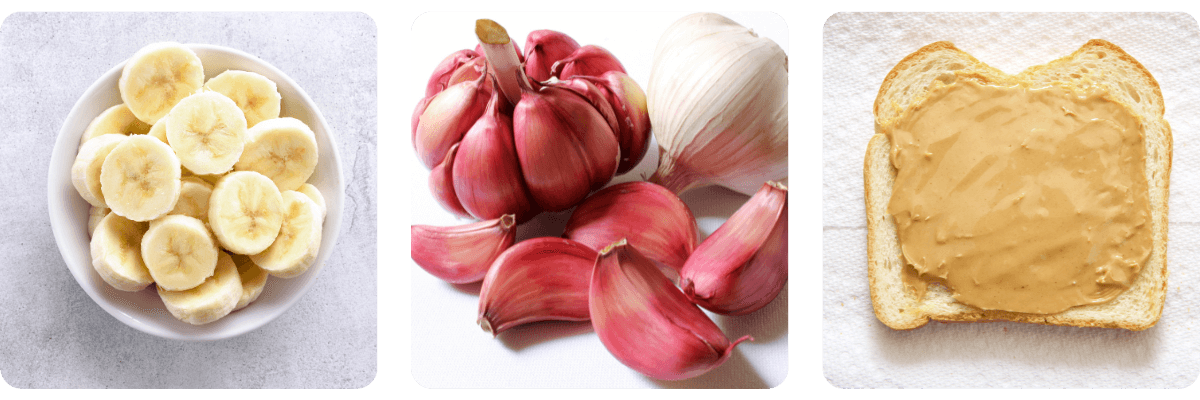
Fructose is mainly absorbed in the small intestine through diffusion by the GLUT5 transporter, which has a relatively low capacity for absorption. The body's ability to absorb fructose is much greater when glucose is present, so the ratio of glucose:fructose is important (at least 1:1 is ideal). Some people have fewer or worse functioning GLUT5 transporters while others simply consume more fructose than their body can absorb. When consumed in excess of glucose, fructose is poorly absorbed. Excess fructose in the digestive tract has an osmotic effect and draws water in to the colon, triggering digestive symptoms.
Fructans, on the other hand, are metabolized quite differently. Only about 5-15% of dietary fructans are absorbed; the rest are excreted or fermented by bacteria in the colon. Fructans serve as prebiotic fibers and support production of beneficial short-chain fatty acids when fermented by gut bacteria. The body does not produce enzymes to break down fructans (or GOS or polyols for that matter).
Both fructose and fructans are associated with gas and bloating. Fructose intolerance more often results in diarrhea, while abdominal pain and constipation may be more common with fructan intolerance.
All FODMAP Types
There are 5 FODMAP types in total. In addition to fructose and fructans, GOS, lactose and polyols are all FODMAPs you'll want to consider when assessing for FODMAP intolerance symptoms. There are two types of polyols, mannitol and sorbitol.
FODMAP Types, Symptoms & Food Sources
Excess Fructose |
Fructans |
Galacto-Oligosaccharides (GOS) |
Lactose |
Polyols (Mannitol and Sorbitol) |
|
Common symptoms |
Diarrhea, gas, bloating |
Abdominal pain, gas, bloating, constipation |
Abdominal pain, gas, bloating, constipation |
Diarrhea, gas, bloating |
Diarrhea, gas, bloating |
High FODMAP food sources |
Apples, pears, mangoes, cherries, figs, pears, watermelon, fruit juice, honey, high-fructose corn syrup, sugar snap peas |
Wheat (bread, pasta, etc.), onions, garlic, shallots, scallion, leeks, asparagus, artichoke, Brussels sprouts, cabbage (such as Savoy cabbage), dried fruit |
Beans, cashew, chickpeas, kidney beans, split peas, green peas, falafel, pistachio, soy milk |
cream cheese, custard, evaporated milk, fresh cheeses, goat and cow's milk, cottage cheese, ice cream and yoghurt |
Cauliflower, mushrooms, apple, dried apricot, blackberry, peach, prune, artificial sweeteners, sugar alcohols |
The Most Common FODMAP Triggers
Everyone, even those who rarely experience gastrointestinal (GI) symptoms, has a limit to the amount of FODMAPs they can tolerate. For those with IBS that threshold is unfortunately often very low.
Fructans and GOS are increasingly recognized as the most common FODMAP triggers. In a recent study, US patients with IBS who responded well to a low FODMAP diet underwent a blinded, cross-over reintroduction trial of 5 FODMAPs types. The researchers identified fructans and GOS as most associated with worsening abdominal pain and/or bloating.
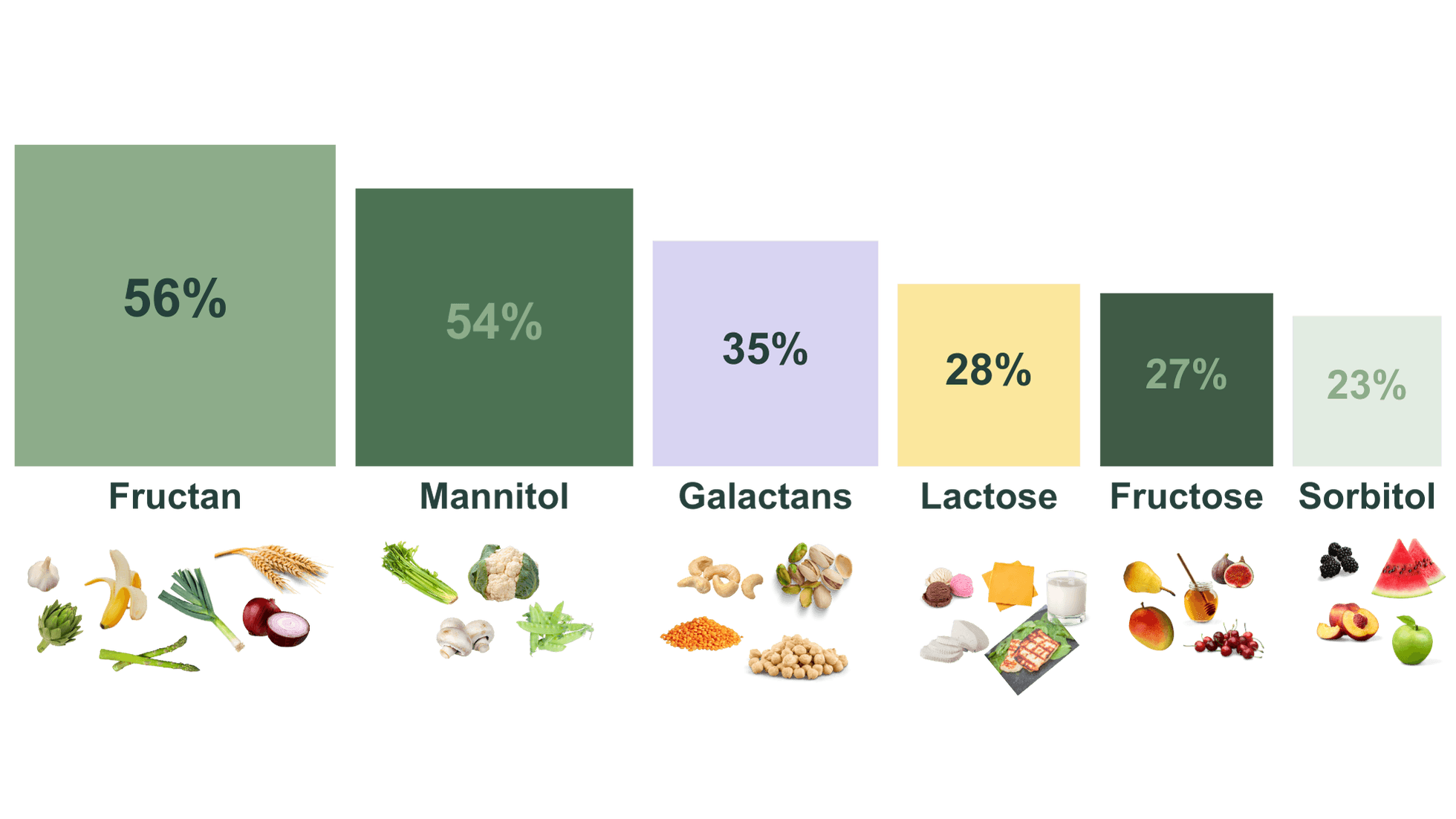
Similar research in Belgium also identified fructans and mannitol as the most common FODMAP triggers during reintroduction. While the prevalence of lactose intolerance in IBS varies widely (27-72%), many genetically susceptible patients may exhibit some level of intolerance.
Given these advancements in understanding which FODMAP groups are most likely to trigger symptoms among people with IBS, less restrictive approaches to the low FODMAP diet have been proposed.
For example, some research suggests that a "bottom up" approach to FODMAP restriction that just eliminates the most common FODMAP triggers can be effective for IBS symptom control. This diet is typically referred to as a simplified or gentle low FODMAP diet. A "bottom up" approach to the FODMAP diet includes reducing intake of milk, wheat, legumes, garlic and onion, cauliflower, mushrooms, and some of the less tolerated fruits, like stone fruits and fruits high in excess fructose. These high FODMAP foods are then replaced with low FODMAP foods and symptoms are assessed.
Since this research on the "bottom up" approach was published in 2019, additional research has compared the efficacy of a traditional low FODMAP restriction phase with a simplified approach to conclude that eliminating solely fructans and GOS (the most common FODMAP triggers) can be equally effective as full restriction in controlling symptoms in people with IBS.
Tolerance Thresholds
Fructose tolerance thresholds also tend to be much higher for fructose than for fructans. It takes an additional 10.5-21g of fructose per day to increase symptoms in patients who respond to a LFD while it takes just 0.75-1.5g of fructan to induce symptoms. If FODZYME were to degrade the entire fructan content of one clove of garlic (0.5g), this would add ~0.5g of extra fructose to the meal.
The average American diet contains about 3.91g of fructan per day. A single dose of FODZYME can break down 3g of fructan, which is equal to about 6 cloves of garlic.
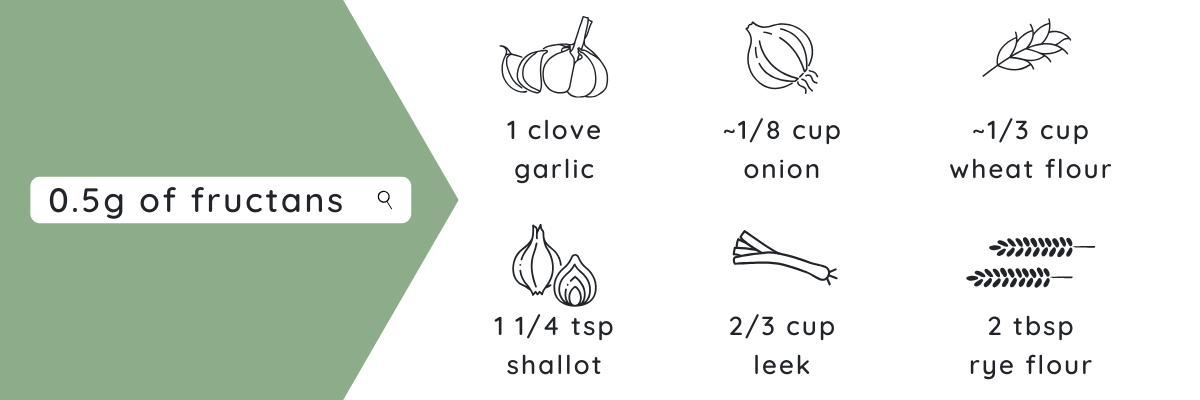
Examples of 0.5g of fructans:
- 1/2 cup artichoke
- 1 cup beetroot
- 3/4 Brussels sprouts
- 1 clove garlic
- 2/3 cup leek
- 1/8 cup onion
- 2 tbsp rye flour
- 1 1/4 tsp shallot
- 1/3 cup wheat flour
- 3/4 cup zucchini
Remember that fructose causes issues when consumed in excess of glucose because glucose aids in the absorption of fructose. As long as the glucose:fructose ratio is maintained at roughly 1:1, maximum fructose absorption is supported. Most fructan-containing foods contain enough glucose to balance out the fructose liberated in the digestive tract.
Also of note: Specific fructose-targeting enzymes also exist (not in FODZYME) for those who are particularly sensitive to fructose. The enzyme glucose isomerase (aka xylose isomerase) works by changing the structure of fructose from the monosaccharide fructose to another monosaccharide, glucose. Treatment for rare hereditary fructose intolerance prescribes avoidance of all fructose, sucrose and sorbitol.

FODMAP Portion Sizes Matter
FODMAPs can cause digestive issues when eaten in amounts greater than what your body can tolerate. Remember that eating low FODMAP diet not about eliminating all foods high in FODMAPs entirely. Only during the elimination phase will you want to cut back significantly on your FODMAP intake. Read more about how the low FODMAP diet works and whether its right for you.
Many foods that you'd limit on a low FODMAP diet are tolerable in small amounts. When following a low FODMAP during, phase two, the reintroduction phase, is focused on learning the portion sizes you tolerate. For example, on day one of a reintroduction you may try 1/4 clove of garlic to assess how your symptoms respond. If you don't experience symptoms, then during your next reintroduction day you'd try increasing to 1/2 clove of garlic and then finally a whole clove.
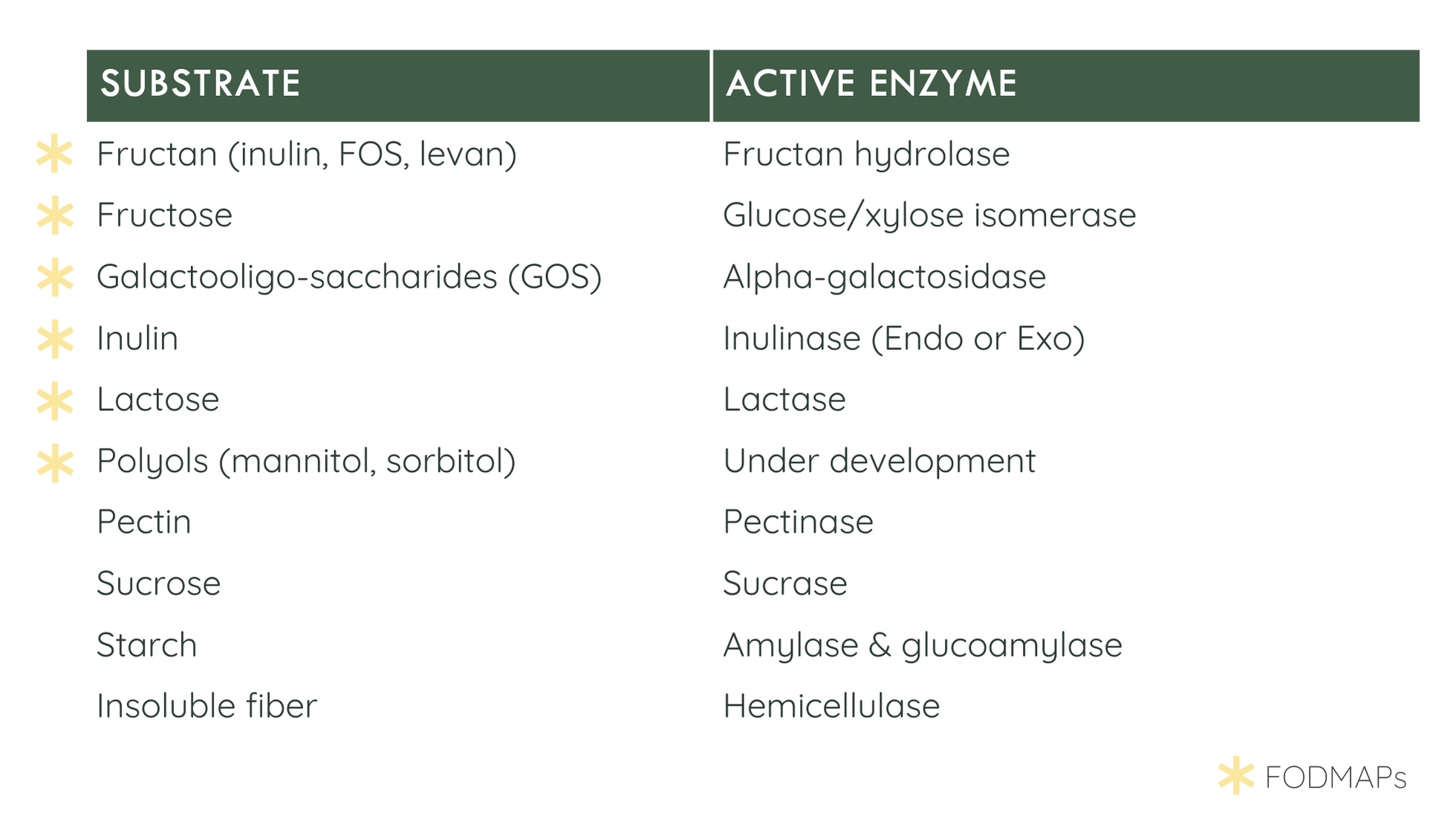
How FODZYME Targets the Most Problematic FODMAP Categories
We designed FODZYME to address the most common FODMAP triggers, both those we know are most implicated in symptoms and those which are most abundant in the typical diet.
This means we can maximize the amount of enzymes addressing the triggers that are known to be most responsible for symptoms. In particular, FODZYME's fructan hydrolase is the only enzyme available that targets the wide range of fructans found in the wild (aka the fruit and veggie aisle).
FODZYME's digestive enzyme blend is optimized to break down the most common FODMAP triggers:
- Fructan hydrolase to break down the fructans found in wheat, onions, and garlic.
- Lactase to break down the lactose found in dairy products
- Alpha-galactosidase to break down the GOS found in legumes, nuts, and some cruciferous vegetables.
By supplementing with these enzymes, many people find that they no longer need to limit their intake of high FODMAP foods. Enjoy pizza, pasta, paninis and much more with FODZYME digestive enzymes.
